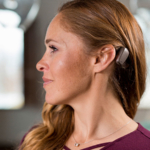 In the spring of this year, sixty-five otology and audiology professionals came together for Cochlear NEXT – a program focused on learning and discussion regarding Cochlear’s CI532 Clinical Study and the respective implications of this emerging and impactful data.
In the spring of this year, sixty-five otology and audiology professionals came together for Cochlear NEXT – a program focused on learning and discussion regarding Cochlear’s CI532 Clinical Study and the respective implications of this emerging and impactful data.
The following information reviews the primary talking points and output from the day’s first topic.
Surgical Outcomes of CI532 Clinical Study: Does electrode placement impact performance?
Presenters:
- Wade Colburn, Biomedical Engineer and Product Manager, Cochlear Implants, Cochlear Americas
- Jonathan McJunkin, MD, Surgeon and CI532 study Investigator, Washington University in St. Louis
A review of published (non-CI532) evidence demonstrates prevailing thought regarding the relationship between electrode placement and hearing performance, prior to the CI532 study:
- Pre-curved arrays may be less likely to be placed in scala tympani 1
- ERW and RW may lead to more consistent scala tympani placement 1, 2, 3
- Electrode placement within scala tympani significantly impacts patient performance 4
When asked in a pre-event survey, only 66% of surgeons agreed that consistent placement in the scala tympani is as likely to occur with CI532 as it is with lateral wall electrode arrays. There was also some difference of opinion on the importance of electrode placement, with only 64% of surgeons agreeing that proximity of the array to the modiolus has an impact on hearing performance.
 However, CI532 clinical study results demonstrate that rates of scala tympani placement of the CI532 electrode are on par with previously cited studies using lateral wall electrodes, with 89% of electrodes being successfully inserted in the scala tympani 5. A mean wrapping factor of 59.6% – which describes the proximity of the electrode to the modiolus – further illustrates the consistency of surgical outcomes using the Slim Modiolar electrode5. For reference, Holden et al. showed that patients with a wrapping factor closer to 60% positively correlated with better hearing performance6.
However, CI532 clinical study results demonstrate that rates of scala tympani placement of the CI532 electrode are on par with previously cited studies using lateral wall electrodes, with 89% of electrodes being successfully inserted in the scala tympani 5. A mean wrapping factor of 59.6% – which describes the proximity of the electrode to the modiolus – further illustrates the consistency of surgical outcomes using the Slim Modiolar electrode5. For reference, Holden et al. showed that patients with a wrapping factor closer to 60% positively correlated with better hearing performance6.
Following presentation of the data and dynamic group discussions, participant consensus shifted considerably according to the post-event survey, with now 86% of surgeons agreeing t hat consistent placement in the scala tympani is as likely to occur with CI532 as it is with lateral wall electrode arrays. Further, 82% supported that proximity of the electrode array to the modiolus has an impact on hearing performance.
hat consistent placement in the scala tympani is as likely to occur with CI532 as it is with lateral wall electrode arrays. Further, 82% supported that proximity of the electrode array to the modiolus has an impact on hearing performance.
Additional discussion focused on the topic of surgical approach, as one of the key design goals of CI532 was an electrode that is indicated for round window (RW), extended round window (ERW), and cochleostomy – allowing surgeons to utilize flexibility and preference when determining surgical technique. Live polling during the NEXT program demonstrated a strong preference for the RW and ERW approaches confirming a perceived industry shift away from cochleostomy as surgeons strive to limit structural trauma caused by implant insertion.
In summary, a review of current and historical data, combined with dynamic large and small group discussions, drove a measurable change in participant perception regarding the positive correlation between electrode placement and hearing performance.
Don’t miss the next installment of our Cochlear NEXT proceedings: Clinical Outcomes of CI532 Clinical Study: A new clinical care approach. Subscribe to our ProNews Blog using the panel to the left to ensure you receive future updates!
© Cochlear Limited 2019. All rights reserved. Hear now. And always and other trademarks and registered trademarks are the property of Cochlear Limited or Cochlear Bone Anchored Solutions AB. The names of actual companies and products mentioned herein may be the trademarks of their respective owners.
References
- O’Connell BP, Hunter JB, Wanna GB. The importance of electrode location in cochlear implantation. Laryngoscope Investig Otolaryngol. 2016;1(6):169–174. Published 2016 Nov 29. doi:10.1002/lio2.42
- Wanna GB, Noble JH, Carlson ML, et al. Impact of electrode design and surgical approach on scalar location and cochlear implant outcomes. Laryngoscope. 2014;124 Suppl 6(0 6):S1–S7. doi:10.1002/lary.24728
- Briggs RJ1, Tykocinski M, Stidham K, Roberson JB. Cochleostomy site: implications for electrode placement and hearing preservation. Acta Otolaryngol. 2005 Aug;125(8):870-6.
- Shaul C, Dragovic AS, Stringer AK, O’Leary SJ, Briggs RJ. Scalar localization of peri-modiolar electrodes and speech perception outcomes. J Laryngol Otol 2018; 1- https://doi.org/10.1017/S0022215118001871
- Preliminary Data on File: US Multicenter CI532 Study. 2018.
- Holden et al. Factors affecting open-set word recognition in adults with cochlear implants. Ear and Hearing. 2013; 34:342-60. https://www.ncbi.nlm.nih.gov/pubmed/23348845



